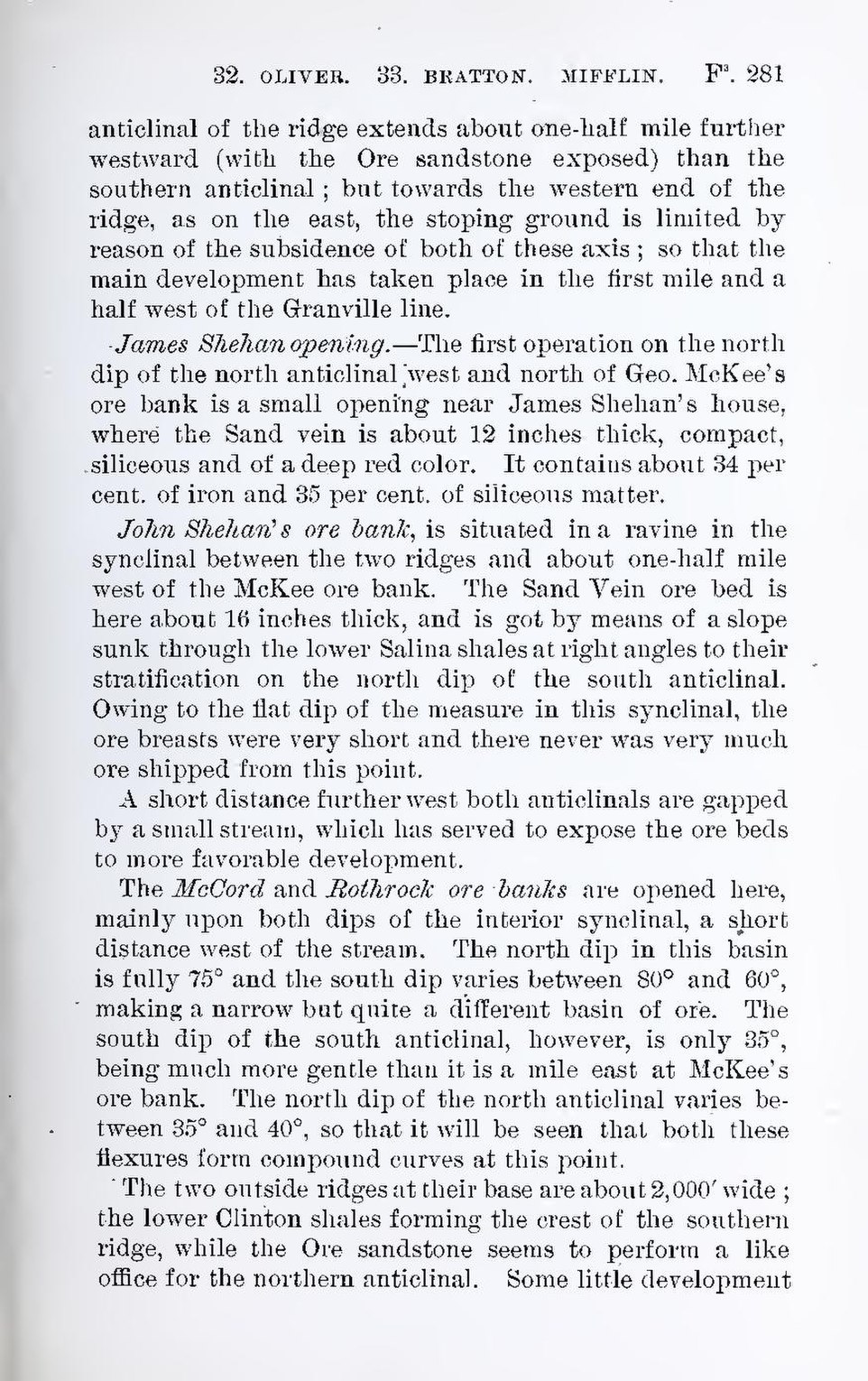anticlinal of the ridge extends about one-half mile further westward (with the Ore sandstone exposed) than the southern anticlinal; but towards the western end of the ridge, as on the east, the stoping ground is limited by reason of the subsidence of both of these axis; so that the main development has taken place in the first mile and a half west of the Granville line.
James Shehan opening.—The first operation on the north dip of the north anticlinal west and north of Geo. McKee’s ore bank is a small opening near James Shehan’s house, where the Sand vein is about 12 inches thick, compact, siliceous and of a deep red color. It contains about 34 per cent. of iron and 35 per cent. of siliceous matter.
John Shehan’s ore bank, is situated in a ravine in the synclinal between the two ridges and about one-half mile west of the McKee ore bank. The Sand Vein ore bed is here about 16 inches thick, and is got by means of a slope sunk through the lower Salina shales at right angles to their stratification on the north dip of the south anticlinal. Owing to the flat dip of the measure in this synclinal, the ore breasts were very short and there never was very much ore shipped from this point.
A short distance further west both anticlinals are gapped by a small stream, which has served to expose the ore beds to more favorable development.
The McCord and Rothrock ore banks are opened here, mainly upon both dips of the interior synclinal, a short distance west of the stream. The north dip in this basin is fully 75° and the south dip varies between 80° and 60°, making a narrow but quite a different basin of ore. The south dip of the south anticlinal, however, is only 35°, being much more gentle than it is a mile east at McKee’s ore bank. The north dip of the north anticlinal varies between 35° and 40°, so that it will be seen that both these flexures form compound curves at this point.
The two outside ridges at their base are about 2,000′ wide; the lower Clinton shales forming the crest of the southern ridge, while the Ore sandstone seems to perform a like office for the northern anticlinal. Some little development
